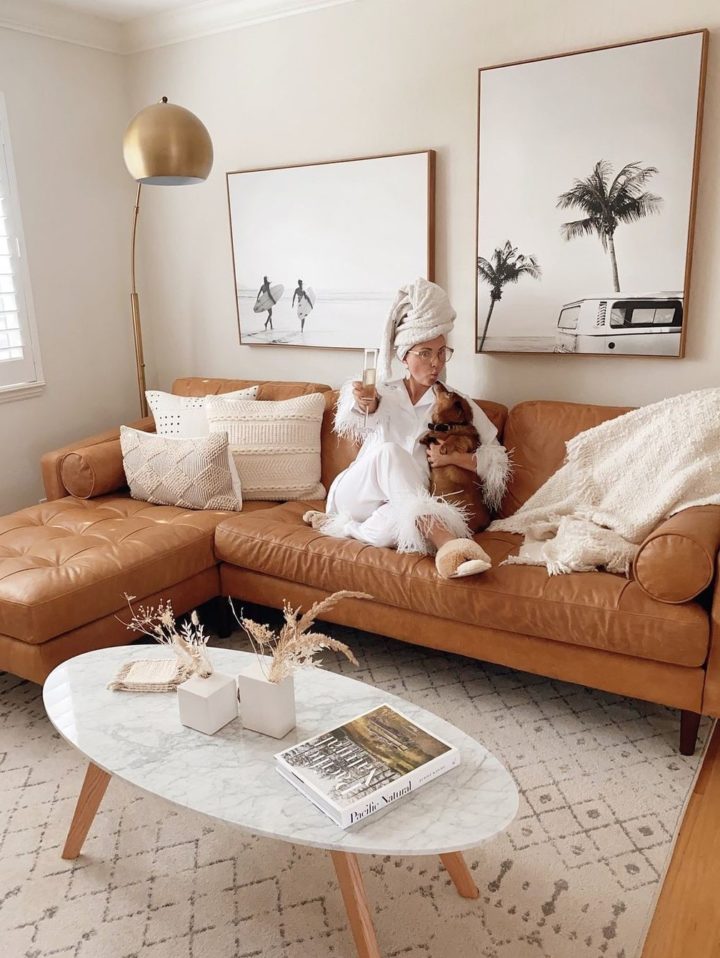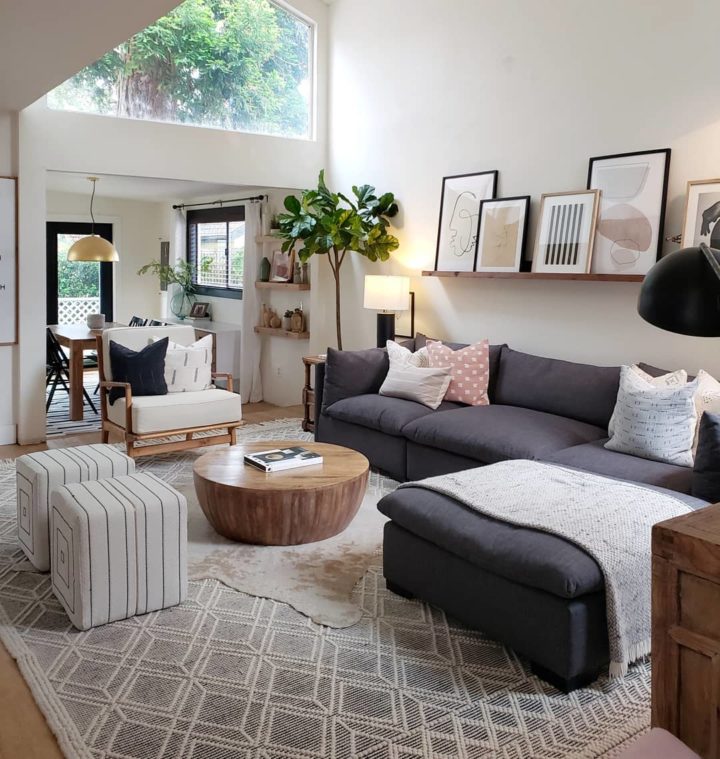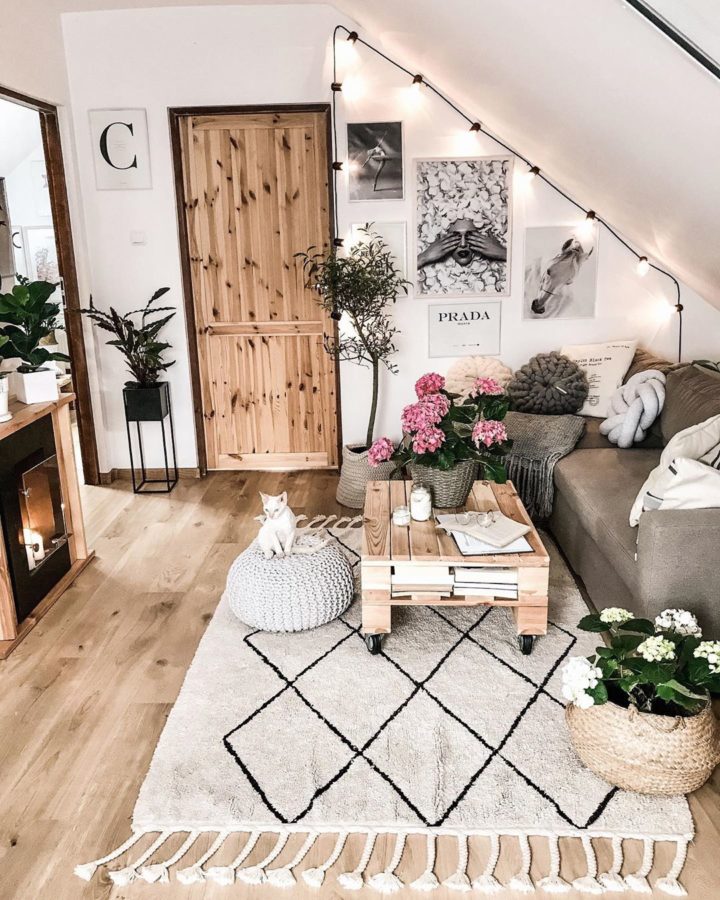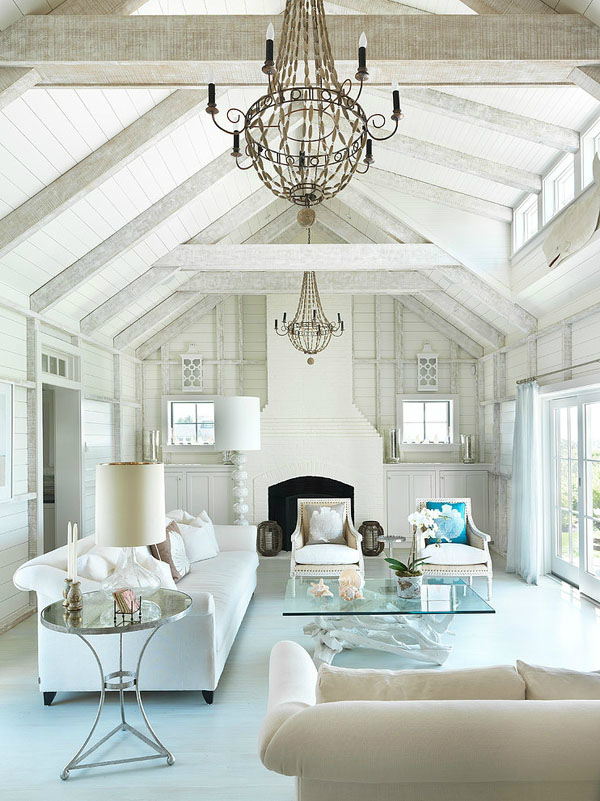Looking for a new piece of furniture can be exciting but confusing and time-consuming, especially if you are not 100% sure of what you would like to purchase. If you have come across leather products, you might have noticed various textures. Indeed, leather products can be “real,” “genuine,” or “faux.” But what is the difference between those types, and how would that affect your furniture’s looks? Keep reading to find out: you might find that everything you think you knew about this material is wrong. Real leather vs Genuine Leather vs Faux – Vegan Leather Upholstery.
Image: POLY & BARK Napa Right-Facing Sectional Sofa in Full-Grain Pure-Aniline Italian Tanned Leather in Cognac Tan, @twfloraltruck
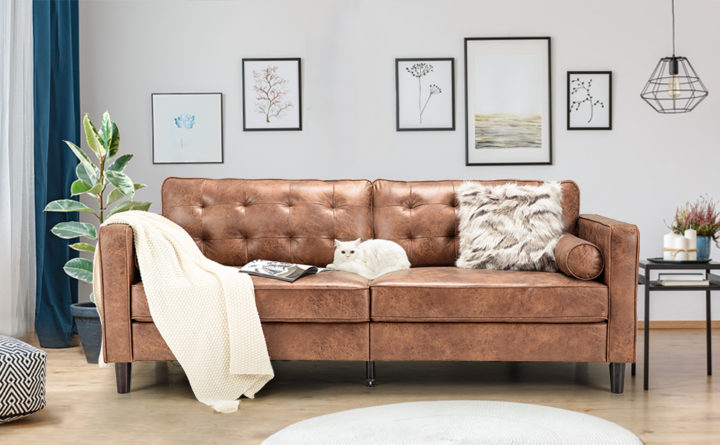
Image: Suede Synthetic Brown Mid-Century Sofa Couch, $559,99.00
What is Faux Leather?
Before we get into the pros and cons of using real vs. faux leather or genuine vs. faux leather, let’s go over the types of faux leather and their characteristics. Knowing about the difference between PU leather and PVC leather will help you make informed purchasing decisions with no regrets.
PU leather looks uniform thanks to a polyurethane finish applied to cotton, nylon, or polyester to create an attractive leather look. PVC leather is usually cheaper and made from polyvinyl chloride and stabilizers to create low-cost upholstery.
Besides the lower cost, many people are switching to faux leather because it does use animals. For this reason, it is common to see it under the “vegan leather” label.
Let’s look a bit closer at the different types of leather and what they can offer.
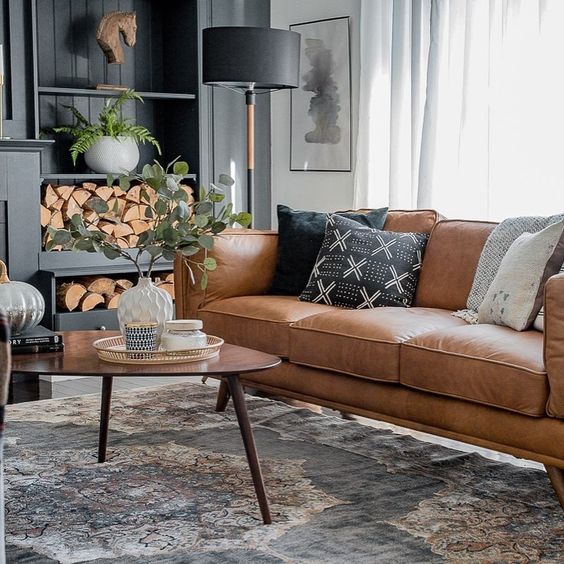
Image: Timber Sofa, ,999.00
Real Leather Vs. Genuine Leather
As you may know, “real” leather is animal hide without the hair and prepared for use by processes such as tanning, which preserves the material against decay and makes it softer.
While sounding similar, real leather and genuine leather are very different. The latter consists of pieces of the lowest quality leather, usually bonded with glue. Because it uses the leftovers from the higher grades of the material, genuine leather is considered low-quality.
As you may expect, this material isn’t as durable as natural leather. Most genuine leathers only contain between 10 and 20 percent leather. The rest is a mix of polyurethane and binders.
If you are looking for a cheap piece of furniture whose quality is irrelevant for its purpose or that you won’t use frequently, go for genuine leather. Just remember that buying a sofa of this material might be a terrible idea, as its quality will drastically reduce with use. Indeed, genuine leather tends to break down over time. If you prefer purchasing a piece that will ideally last long, it is best to go for something made of natural leather.
For your information, “real” leather can be either full-grain, embossed, or aniline-dyed. Of course, all differ in terms of quality and price. Full-grain leather is the most durable and most natural type of leather. If you like your pieces to show some of the texture and blemishes of the animal, choosing furniture of this material will be your best choice.
Aniline dyed leather is the vintage-looking material you might have seen on some sofas and chairs. Finally, embossed grain leather has a texture free of defects. You might recognize it by the regular patterns it shows.
How To Decorate A Living Room With A Black Leather Sofa
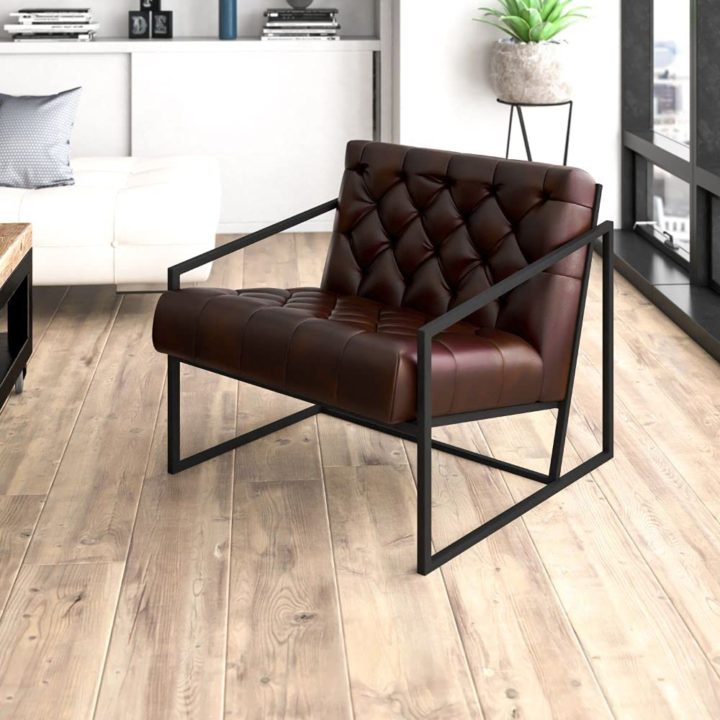
Image: HERCULES Madison Faux Leather Reto Lounge Chair, $507.49
Real Leather Vs. Faux Leather
The fundamental difference between real and faux leather is that the first comes from animals, usually cattle, buffalo, or oxen. The latter comes from a base of plastic treated with wax or dye to create the typical color and texture we associate with this material.
While you can consider your piece of natural leather as unique, you cannot say the same about something made of faux leather. The beauty of a genuine product comes from the hallmarks indicating its origin: scars, veins, and stretch marks can add character to leather and give it a distinctive look. Instead, faux leather is uniform and synthetic, which means no “defects.” You can easily distinguish authentic leather from faux by its smell and particular feel.
Of course, the main advantage of faux leather is its price. Because it is mass-produced, it is much cheaper than genuine leather. On the other hand, natural leather is hard to manufacture, thus more expensive.
Overall, faux leather is low maintenance and easy to keep clean. However, it tends to break down quite quickly. Additionally, this material feels less organic and might be slightly uncomfortable.
One of the main benefits of choosing natural leather upholstery is its high durability. Natural leather furniture looks classy and feels good. However, its superior durability comes at a cost. Indeed, natural leather upholstery requires regular maintenance to prevent drying and cracking. Additionally, it is easy to stain and challenging to clean. If you cannot commit to taking good care of your leather furniture, you should reconsider your options.
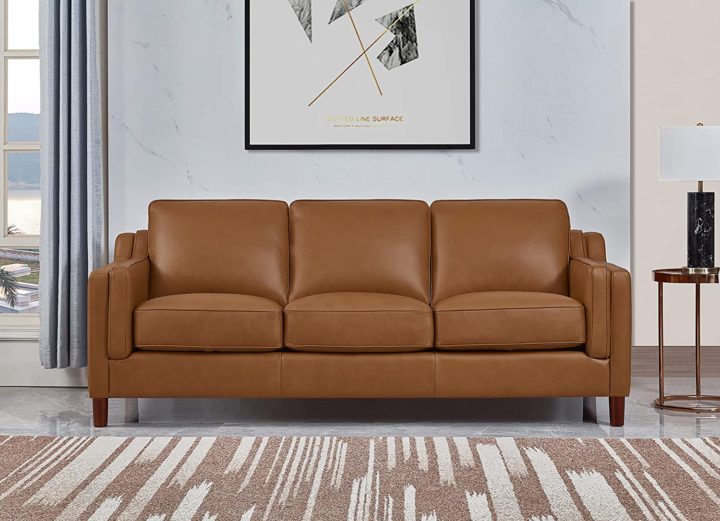
Image: Hydeline Bella 100% Leather Sofa Couch, ,299.00
The Bottom Line
Choosing one type of leather over the other depends on your taste and the use you are planning for the piece of furniture. If you prefer durable and stylish decore, natural leather upholstery is, without a doubt, your best choice.
On the other hand, if the budget is a limit or if animals concern you, investing in a cruelty-free, low-maintenance piece of furniture made of faux lather could be your solution.
Of course, you should consider its lower durability: usually, a faux leather sofa will last between 10 to 15 years before cracking. Instead, natural leather pieces last longer and even get better with time.
While genuine leather is cheaper than faux, it is also the less durable and lowest quality. If you can choose, it is best to go for faux leather. The slightly higher price will be worth it in the end. Additionally, PU or PVC leather can come in different colors or textures, making them more attractive in interior design.
Of course, the best quality material and more classic one is natural leather. If you are shopping for leather furniture, consider all of the benefits and drawbacks we listed here before making your final choice. Don’t forget to take into account style, durability, and feel. More often than not, a slightly higher investment will result in a long-lasting piece of furniture that will liven up your rooms.
Tags: leather furniture, living room sofas
